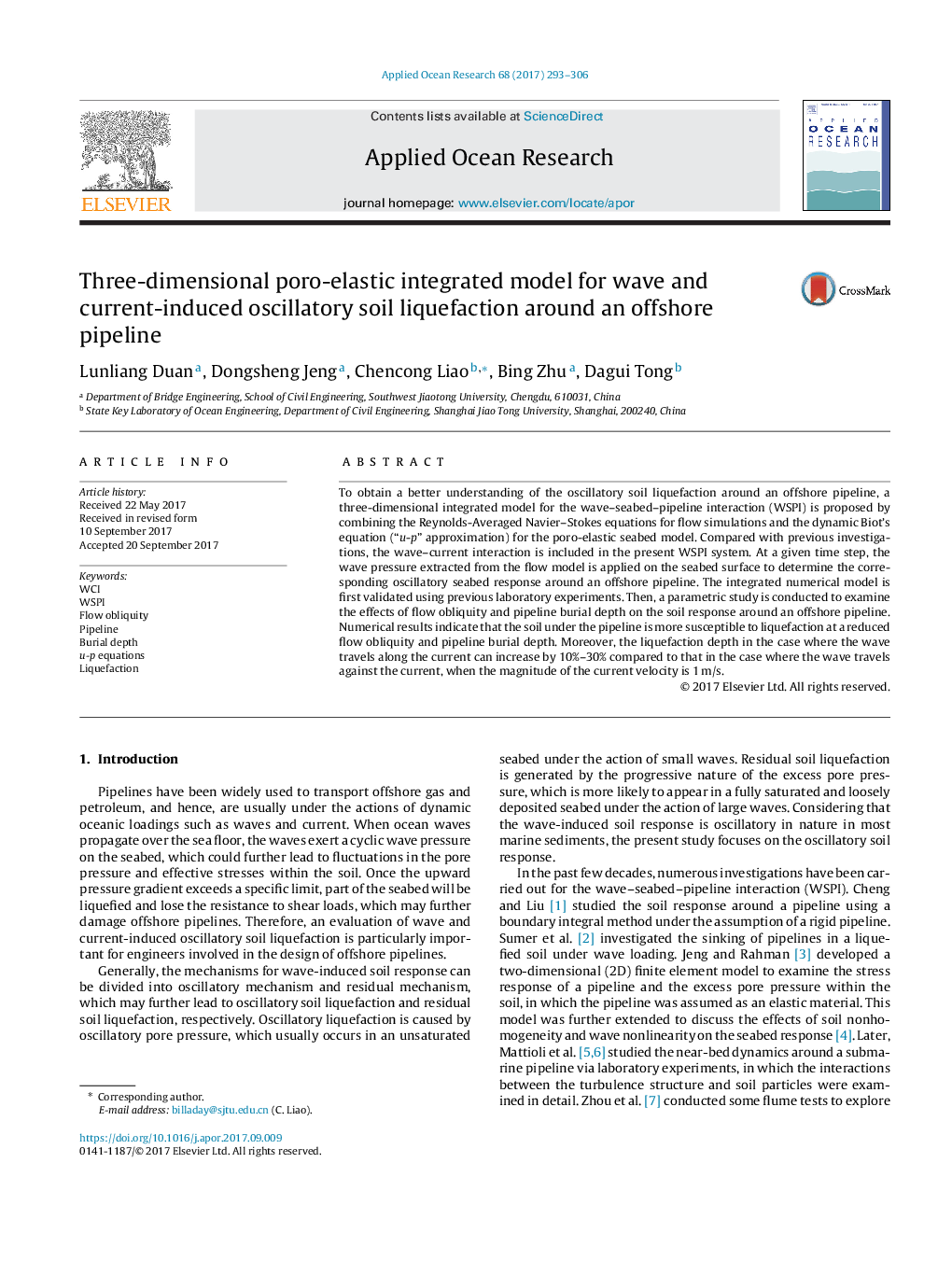| Article ID | Journal | Published Year | Pages | File Type |
|---|---|---|---|---|
| 5473172 | Applied Ocean Research | 2017 | 14 Pages |
Abstract
To obtain a better understanding of the oscillatory soil liquefaction around an offshore pipeline, a three-dimensional integrated model for the wave-seabed-pipeline interaction (WSPI) is proposed by combining the Reynolds-Averaged Navier-Stokes equations for flow simulations and the dynamic Biot's equation (“u-p” approximation) for the poro-elastic seabed model. Compared with previous investigations, the wave-current interaction is included in the present WSPI system. At a given time step, the wave pressure extracted from the flow model is applied on the seabed surface to determine the corresponding oscillatory seabed response around an offshore pipeline. The integrated numerical model is first validated using previous laboratory experiments. Then, a parametric study is conducted to examine the effects of flow obliquity and pipeline burial depth on the soil response around an offshore pipeline. Numerical results indicate that the soil under the pipeline is more susceptible to liquefaction at a reduced flow obliquity and pipeline burial depth. Moreover, the liquefaction depth in the case where the wave travels along the current can increase by 10%-30% compared to that in the case where the wave travels against the current, when the magnitude of the current velocity is 1Â m/s.
Keywords
Related Topics
Physical Sciences and Engineering
Engineering
Ocean Engineering
Authors
Lunliang Duan, Dongsheng Jeng, Chencong Liao, Bing Zhu, Dagui Tong,
